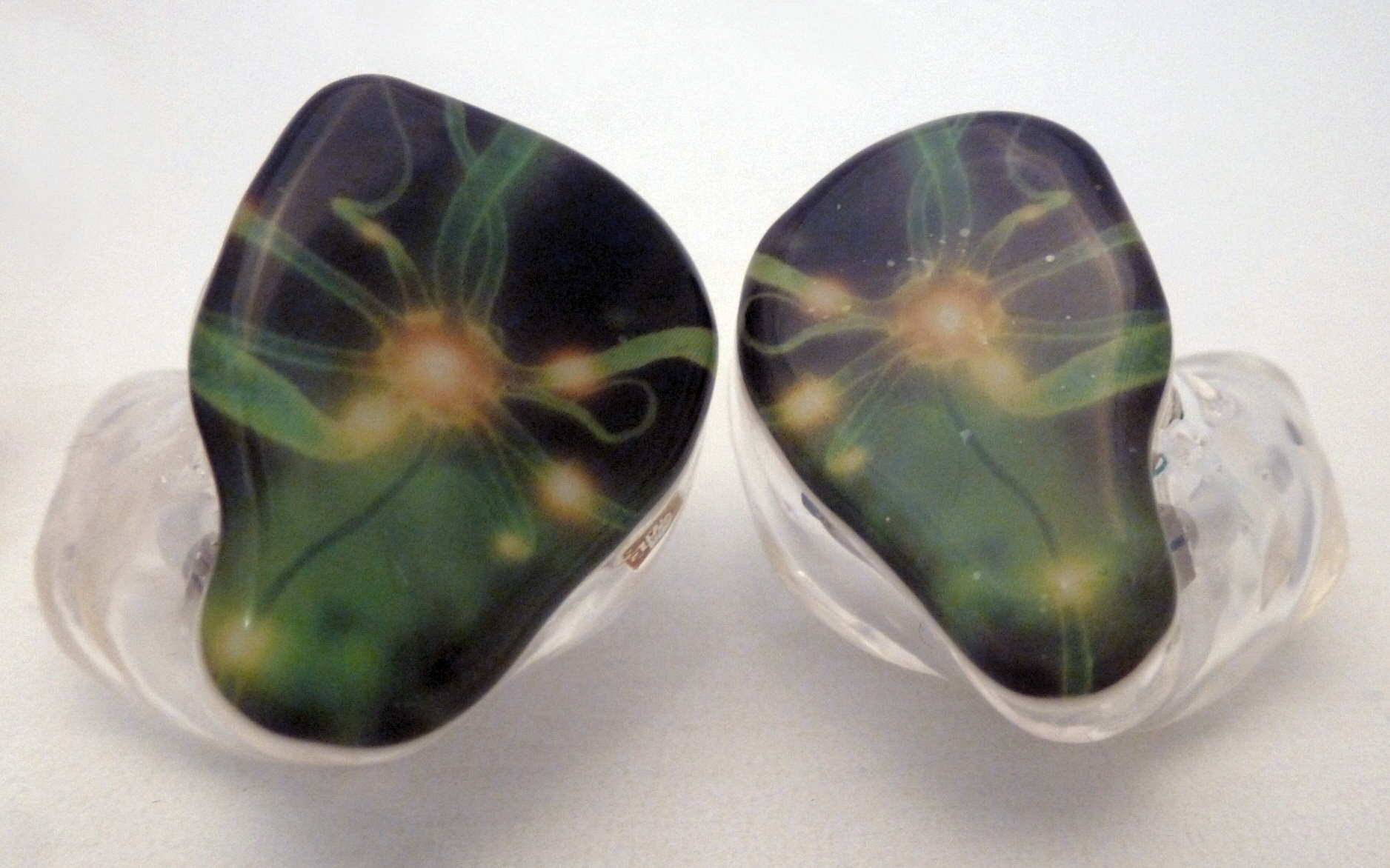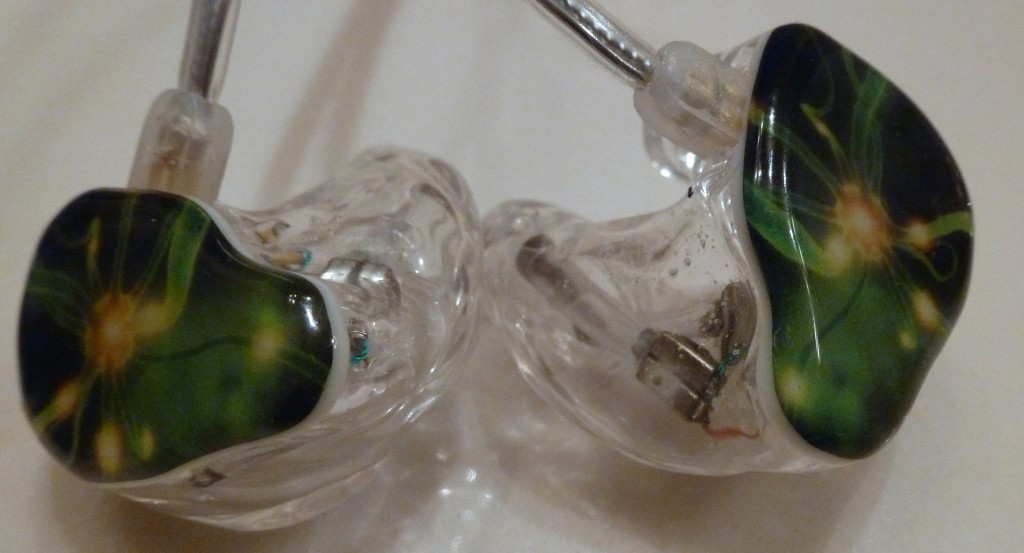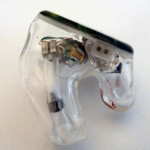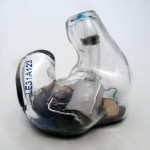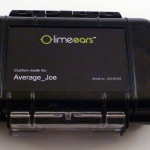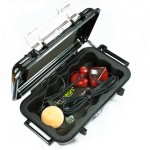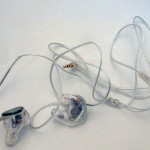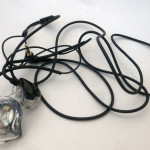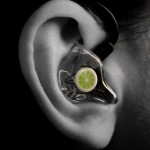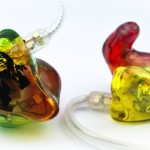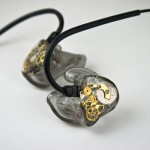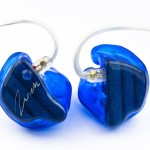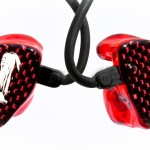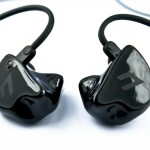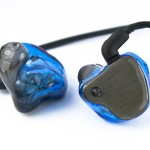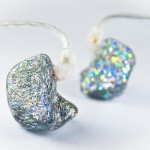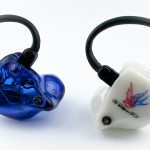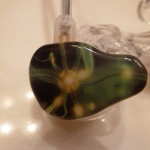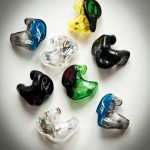Make: Lime Ears
Model: LE3/LE3B
Base Price: 555€; + 70€ for the SW option
Country of Manufacture: Poland
Poland has become somewhat of a powerhouse in custom in-ear monitor with two companies with high-performing silicone shelled models: Spiral Ear and Custom Art. Lime Ears was officially started in October 2012, a little after Custom Art, after 2 years of tuning monitors. Started by Emil Stolecki, a sound engineer by education and acoustic designer by trade with the assistance of an audiologist friend involved in hearing-aid manufacture, the name was created by simply spelling Emil backwards.
As a Bassist, Emil used musicians monitors, but the sound quality was not to his liking, so he decided to make his own. He designed them for a purpose, but still wanted them to appeal to musicians, studio engineers, and audiophiles. I asked Emil about his design goals for the LE3 and LE2 and here is his response:
“I’d start with LE3, which was main axis of my designs, being 3-way it was supposed to be starting point to others. Again, simple answer would be that goal was most pleasant musical sound but getting a little bit deeper into the aesthetics I’d say that I wanted overall sound to be not too aggressive, a little bit laid back, with crispy, but not harsh highs (even highs from ribbon tweeters as found on Adam Audio monitors are a bit harsh for me), lows that are punchy and could get pretty big if sound engineer meant it that way (otherwise they shouldn’t dominate). I wanted mids to be a little bit recessed, just enough to avoid nasal sound and sharp enough in higher part of the band to maintain punch in snares or grain in distorted guitars.
LE2, since it’s 2-way and lacks some continuity between lows and highs was meant to be made a little bit more contour and thus maybe less transparent but more interesting. Lows were made bigger and slower, highs were kept a little bit more harsh and slightly more emphasized which widened sound stage in my opinion.”
Since the creation of the LE3, Emil tuned a new LE3 to be more balanced with less bass and subsequently more treble emphasis and clarity. This version is called the LE3 while the original has become the LE3B. There is also a version with a switch for a few dollars more that will allow switching between the two sound signatures, which is one of two CIEMs that uses a switch to change the sound signature, and one of about 20 offerings with capability to change the sound signature.
ORDERING INFORMATION
Lime Ears uses a simple order process defined here, which starts with an email. Emil is friendly and responsive, making the process fun. The base price is 555€ base price, but of course options can result in a higher price, and adding the switch option, which gives an additional sound signature for a little amount, it an additional 70€.
Price as tested: LE3: 655€ (555€ base price + 60€ for wooden faceplates + 40€ for the colored canal tips); LE3B: 575€ (555€ base price + 20€ for simple artwork)
Options and pricing can be found on the product page.
NOTE: Prices listed will be in effect in August 2014 – order now for better pricing!
Impression instructions:
– Beyond second bend of ear canal
– Full concha
– Open jaw impression (1-2′ bite block, as long as it’s comfortable and doesn’t generate jaw muscles tension during impression curing)
– High viscosity silicone is preferred (as for making impressions for CIC hearing aids)
– Cotton or foam dam – it doesn’t matter, as long as second bend will be clearly visible.
DESIGN
The LE3 and LE3B are both 3-driver, 3-way configurations in acrylic shells with dual sound tubes and a detachable cable. The LE3SW combines the LE3 and LE3B in one shell with a switch that allows the user to quickly change between the sound signatures. The detachable cable sockets are recessed and fit a standard 2-pin connector.
PACKAGING & ACCESSORIES
The presentation of the LE3/LE3B is top-notch, with Lime Ears tape, matching cases, and the touch of a special product. The accessory pack includes a padded Pelican case, desiccant pack, ear lubricant, and a cleaning tool. The case is crushproof, waterproof and dustproof case. 9/10
CABLE
The two different tunings came with two similar, but different cables. One is clear coated while the second cable is a black rubber jacketed cable, not the typical twisted cable. Both cables have a strong memory effect, bending back to the way they have been stored and resisting straightening, making for an annoying experience. The clear cable is stiffer than the black cable, but the black cable is more tangle-prone above the Y-split due to the sticker coating and thin cable. The cables are free from microphonics and both are acceptable during use, but far from the best I have experienced. The cable has recently been replaced with a twisted cable for better ergonomics. TBD/10
FIT & FINISH
Receiving two different units has allowed me to see two different iterations of Lime Ears fit & finish, which is good. Having two different CIEMs for the two different tunings has given me double the opportunity to see Emil’s work. He is innovative and likes to try new things, and does make them well. While the overall quality of the second set of shells is better than the first, the minute imperfections in the first are completely gone in the second. The artwork, while innovative, is done well, but nothing to write home about. Emil did seem up for any artwork challenge, but to be honest, I couldn’t think of anything too exciting or challenging for him to make. Artwork examples below (including the glow in my the dark artwork). 7/10
ISOLATION
Isolation is on par with most other hollow acrylic shelled CIEMs, which typically blocks out between 24 to 28 dB of sound, depending on the frequency, fit/canal length, and individual anatomy. 5/10
SOUND
Disclaimer: My review is done in a comparative way using similarly priced IEMs and/or CIEMs for perspective and to determine performance. In this review I try to accurately portray the product under review, presenting strengths and weaknesses, the sound signature, characteristics, and technical performance as opposed to providing flowery dialog of performance without perspective. My ultimate goal is to enable you to make an informed decision about what product is right for you. Take the review as a critical look at the product and not a sales pitch or marketing fluff. I believe gear should be selected based on the sound signature you want and/or the specific use, not solely on technical performance or unsubstantiated hype. Here are some quick references for more information: My review technique, Thoughts on reading a review, Custom IEM information
The Lime Ears LE3/LE3B both received 100+ hours of burn in as is customary before I do my serious listening. The following custom IEMs were used for comparison: Dream Earz AUD-5X, Dream Earz AUD-8X, Alclair Reference, ProGuard P2+1, In Earz IE-P250, Perfect Seal PS6, Minerva Artist Pro. Comparisons can be found on page 2 of this review.
The LE3/LE3B both received 100+ hours of burn in as is customary before I do my serious listening. The following custom IEMs were used for comparison: Dream Earz AUD-5X, Dream Earz AUD-8X, Alclair Reference, ProGuard P2+1, In Earz IE-P250, Perfect Seal PS6, Minerva Artist Pro. Comparisons can be found on page 2 of this review.
LE3 vs. LE3B: The LE3B was the original tuning and it has plenty of clean and clear low end, but the clarity isn’t quite to the level of many CIEMs within the price range. After mentioning the clarity issue with Emil, he created the LE3, which has better clarity, but it comes with a different sensation and tonality.
The LE3B is effortless, fun, musical, spacious, and it is easy to get lost in the personally powerful sound. On the other hand, the LE3 offers a better window into the details of the music, offering a lighter tonality that accentuates individual instruments better, but it doesn’t offer the fun, powerful, engaging experience of the LE3B. The midrange presentation of the LE3B is a bit more forward and the presentation is deeper while the LE3 has a wider presentation that isn’t as deep. Detail levels are similar, but the LE3 articulates detail more than the LE3b while the overall presentation of the LE3B, with the added depth, resolves more of the entire presentation. Headroom is greater on the LE3B but transparency and coherence are better from the LE3, as is clarity of course.
The differences come down to the type of music being listened to, as pop music, EDM, and other music where warmth and a heavy bass presence are expected sound better and more natural from the LE3B while acoustic music, vocals, and lighter music that sounds too heavy from the LE3B is right on with the LE3.
Bass: The quantity of bass from the LE3B is substantial, and the driver doesn’t lose steam in the lowest registers as many CIEMs that use a single driver do. Quality is good, as the bass is tight and well textured for a top-notch bass experience for the price range. The bass can interfere with the rest of the spectrum and bring a veil to the sound while, and the integration with the rest midrange isn’t great. In tracks that aren’t meant to sound bass heavy, and even some that are, the bass is turned up, giving separation of the various parts of the frequency spectrum. Overall, the bass of the LE3B gives a feel that is akin to having quality subwoofers adding an emotional aspect through feeling the bass.
In contrast, the neutral sound of the LE3 sounds lean and lacking even though there is still great capability and similar overall quality to the bass region. It is integrated within the rest of the sound signature better, with increased coherence, but the texturing isn’t quite as good as the LE3B. Depth of the presentation is still excellent, and the driver can sustain notes quite well, but the bass is quite neutral and not exaggerated.
If enhanced bass is what you are after, the LE3B is an excellent choice when all things are considered, including the combination of capability and quality. If you want neutral, the LE3 is still capable and punches deep.
Midrange: The LE3 and LE3B diverge in the midrange to an extent not unlike the bass, but do share the depth of presentation and imaging. The LE3 midrange is more in-line with the bass quantity while the LE3B midrange is a slight bit pushed back in comparison, and notes are a bit thicker than the LE3. Combining these characteristics gives the LE3B a warmer, more tube-like sound that conveys much more power while the LE3 reveals more within the presentation with better clarity. The upper-midrange of both has a slight dip by design to avoid a nasally sound, which is more prominent in the LE3 due to the midrange presentation, but results in a natural sound.
When compared with other CIEMs, this recessed area is a big differentiator that sounds good or bad depending on each track’s characteristics. Clarity levels of the LE3 is about on par with the price range, and the LE3B competes given the sound signature. Comparing the LE3B with purpose-build stage monitors such as the ProGuard P2+1, the differences between the upper midrange area is quite prominent, as it is between the M-Fidelity SA-43 with the “presence” switch on. Combining the great imaging and presentation depth, the LE3 and especially LE3B perform well and have a lot to offer for the listener.
Treble: The treble is a bit pronounced in comparison with the upper midrange, giving a sense of brightness even though the LE3B treble is relaxed and the LE3 treble is a slight bit above what I consider neutral. While detail is plentiful, it is more on the revealing and analytical side given the smoothness of the rest of the spectrum. In perspective, this is not unusual for the price range, better than most lower-cost CIEMs, but not to the level of higher-end CIEMs: they perform where they should. Extension is average for the price range, extending up to 16 KHz in test tone listening.
Overall quality of the LE3 is higher than the LE3B, but the LE3B treble in integrated better with the rest of the spectrum for a more transparent, natural overall sound. Overall treble performance is very representative of the price point and isn’t offensive, but will reveal issues with poor masters and/or low bit rate tracks.
Presentation: The models present in different ways as follows:
LE3: Relatively neutral presentation with a bit of emphasis on both ends of the spectrum with a slight tendency to be analytical. Soundstage recreation focuses on depth over width and when combined with the good imaging results in a very 3D presentation. The presentation perspective is quite neutral; not too forward or too laid-back. Coherence and clarity are good resulting in an overall transparent sound, and outperforming the LE3 overall in these characteristics. The LE3 isn’t quite as natural and laid-back due to the more analytical presentation in comparison with the LE3B’s more relaxed and natural presentation.
LE3B: Bass-heavy with a more up-front presentation, the LE3B also emphasizes depth over width, but has a more organic overall feel. Notes are thicker and that thickness can greatly affect clarity with entry level sources, resulting in hidden details and a unremarkable sound, but with high quality sources this isn’t an issue. Combining the frequency response with the coherence, imaging, and 3D presentation, the LE3B recreates a sense of space and power that is rare at this price range. The overall presentation is reminiscent of a stage monitor, but with a bit sharper note for a more audiophile feel.
Volume performance: Both the LE3 and LE3b perform well at all volume levels, but at very low volumes the midrange starts to sound a bit recessed. At higher volumes, the treble can be a bit harsh and the LE3b bass quality starts do decrease due to the enhancement. For a triple driver, the LE3 and LE3b perform quite well at louder volumes.
Sound Summary: The LE3 and LE3B offer different tunings, with the LE3B offering a more organic, relaxed; yet up-front presentation that is bass emphasized while the LE3 is more on the neutral side. Presentation size of both isn’t large in width, but both have excellent depth and imaging for a very 3D.experience. Bass quality for both is excellent given the single driver and the midrange contains plenty of detail although the thicker notes and additional bass of the LE3B can result in a bit of a veil.
The LE3 has a presentation that is similar to a reference monitor, but not quite as analytical or spacious, achieving a nice balance between reference and audiophile. The LE3B is reminiscent of a stage monitor, with enhanced bass to cut through loud venues and relaxed treble for a fatigue-free experience. But the real gem is the sense of power and naturalness combined with the ease of listening that the LE3B can provide, albeit at the expense of clarity, which is rare for the price range.
The LE3SW combines the two, allowing a quick change between the two sound signatures with a simple flip of a switch on each shell. From an audiophile standpoint, the switch goes from a revealing reference sound to a powerful fatigue-free sound, and from a pro standpoint the change goes from a stage monitor to a reference monitor.
